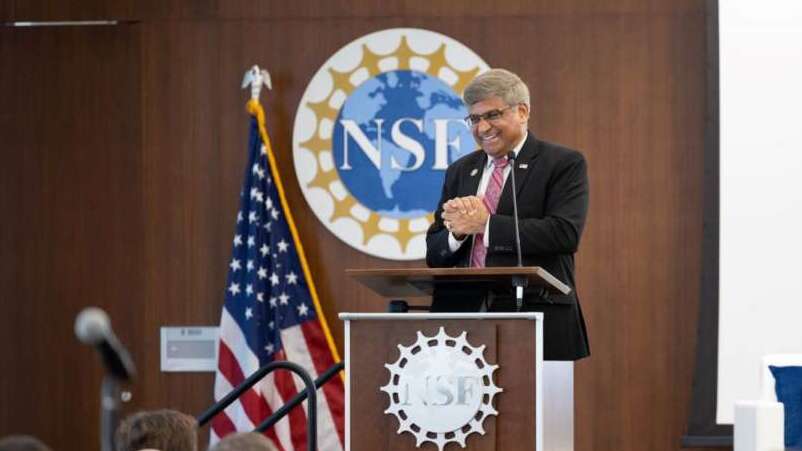
As National Science Foundation (NSF) Director Sethuraman Panchanathan looks to the future of the National Artificial Intelligence Research Resource (NAIRR) pilot, he wants to ensure that a lack of resources doesn’t become a roadblock to AI innovation.
In an exclusive interview with MeriTalk, Panchanathan explained that the NAIRR is all about democratizing access to AI for all U.S.-based researchers and educators. Yet, without the proper resources, those from underrepresented groups, nonprofits, and small businesses may be left behind.
“As you can imagine, the AI work increasingly requires resources – whether it is large compute resources, model resources, data resources, algorithmic resources, or software resources,” Panchanathan said. “So, when you need these kinds of resources, if you don’t have them available, only certain groups will be able to do the work.”
“We want to make sure that everybody who has good ideas to contribute, good solutions to contribute, we want them to be able to have the access to resources to be able to do that,” he added. “That is the fundamental reason why we want to ensure that we have a National AI Research Resource that is democratizing AI access for all researchers and practitioners to be able to contribute their ideas and solutions.”
NSF first launched the NAIRR pilot in January, meeting a requirement set by President Biden’s AI executive order (EO) issued in late October 2023.
NSF, in partnership with the Department of Energy, awarded 35 projects first-round access to the NAIRR on Monday. These awards provide access to a set of advanced computing resources for projects focused on advancing safe, secure, and trustworthy AI.
As part of Monday’s announcement, the NAIRR pilot also opened the next opportunity for researchers and educators to apply for access to resources that support AI research.
In addition to the 35 projects awarded computational time this week, Panchanathan told MeriTalk that NSF has also reviewed another 50 projects that have received positive recommendations. However, he said NSF doesn’t have the resources to scale to 50 projects just yet.
“Basically, what we are looking for is resources to be able to enable them [and] energize them, in addition to the second round of the pilot that we are also interested in,” the director said. “Because, in this particular field, you want to make sure that you’re able to energize those ideas at speed.”
“You can see the breadth and depth of some of those [projects], and you don’t want them not to be able to move at speed just because of lack of resources,” he emphasized.
It’s important to note that the NAIRR is just a pilot project for now, but Congress has already begun bipartisan work to try to codify the NAIRR and attach it to a permanent source of funding.
When asked about the importance of codifying the NAIRR into law as a permanent resource, Panchanathan said, “I think it’s very important for the nation to have the ability to be able to energize all of these ideas.”
“NAIRR is very important, and that’s why there is already work in Congress to see how NAIRR might be more formalized and invested in. I’m very gratified to see that,” Panchanathan said.
“I’m very grateful for the bipartisan support of Congress to be able to advance this concept, which is essentially going to democratize AI and ensure that every AI talent and every AI idea is given its fullest attention so that we might outcompete in this race that we have to do better globally, and to do better for our nation from the perspective of economic security, national security, and prosperity for our citizens,” he said.
So, what’s in store for the future of the NAIRR? Panchanathan said that two years from now, he hopes that a lack of resources won’t be a problem.
“What I would like to see is that resources do not become a constraint for any idea in AI – being able to be taken up and expressed in the fullest form,” he said. “No discovery should be impeded, no translational work should be impeded, and no talent that is ready to engage in AI is not given the opportunity.”
As for his own goals during his time as NSF director, Panchanathan said he has two main objectives: “I want opportunities everywhere in our country, and innovation anywhere in our country.”
AI, he said, is “an excellent exemplar of that concept” – as is the NAIRR. NSF has invested in AI technologies for quite some time, but the recent EO has truly helped to accelerate the agency’s progress, he said.
“I think it’s important for everybody to understand that this is an exciting moment for our country and that there is so much potential, so much possibility for the future. And that’s what this is about,” Panchanathan concluded.
